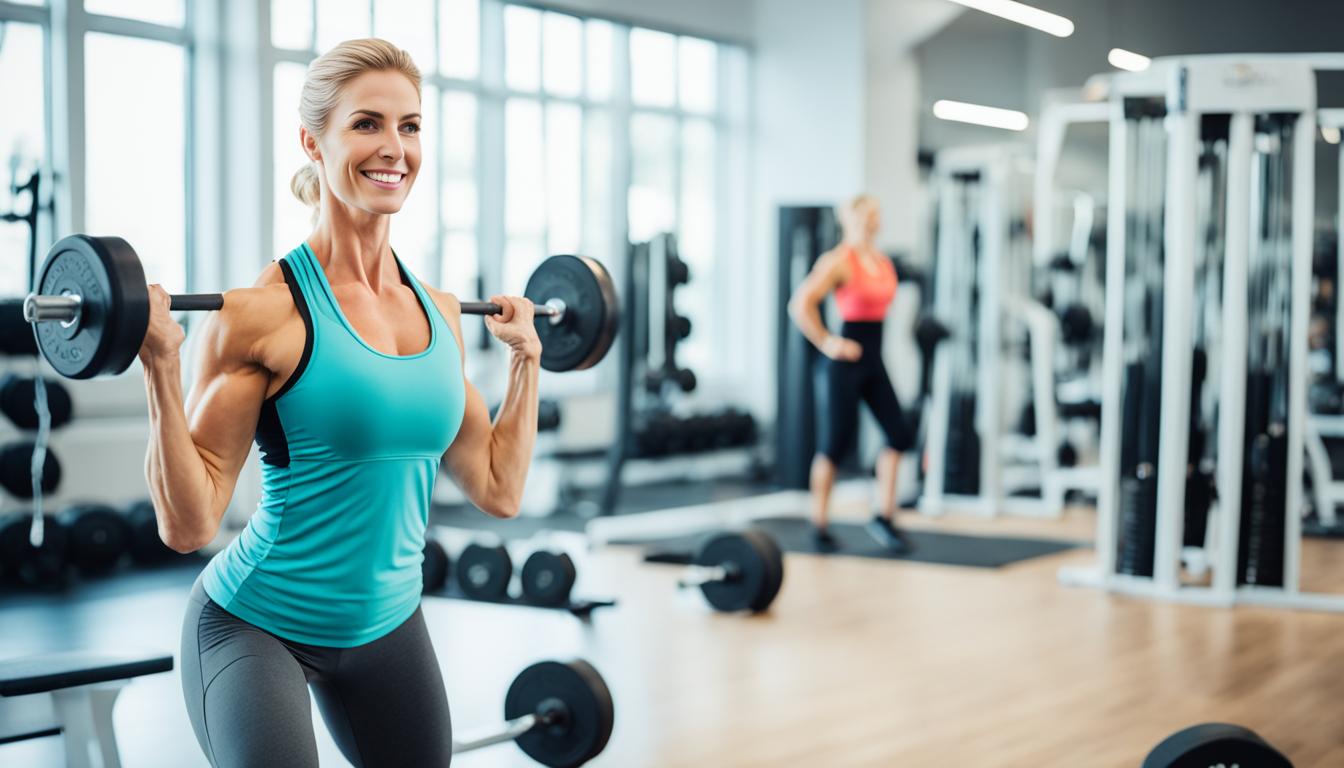Fitness photography is an art that captures the strength, dedication, and healthy living of athletes. It is all about freezing those powerful moments that showcase the athleticism and physique of individuals in their prime. With the right techniques and equipment, you can take stunning fitness photos that inspire and motivate.
To capture the dynamic energy and vibrant essence of fitness, you need versatile and sharp lenses that bring out every detail. One such lens is the Nikon AF-S DX 16-85mm f/3.5-5.6 ED VR, known for its exceptional image quality. This lens is perfect for shooting fitness portraits, landscapes, and interiors, allowing you to capture the beauty of movement with ease.
Key Takeaways:
- Fitness photography celebrates the strength and healthy living of athletes.
- Using versatile lenses like the Nikon AF-S DX 16-85mm f/3.5-5.6 ED VR enhances the quality of fitness photos.
- Focus on capturing dynamic and energetic images that showcase the athleticism and physique of individuals.
- Invest time in understanding your client’s fitness journey and their comfort level during the shoot.
- Experiment with different locations, lighting techniques, and composition to create unique and captivating fitness photos.
Tips for a Successful Fitness Photoshoot
To have a successful fitness photoshoot, it’s crucial to understand your client and their fitness journey. By talking to your model about their fitness story, you can gain insights into what they are comfortable with and choose the right location and props for the shoot.
It’s also beneficial to take test photos in the gym before the photoshoot to familiarize yourself with the lighting and find the best spots. This way, you can ensure that you capture the essence of the workout images and create stunning gym photo shoots.
When it comes to the location, opt for a simple and visually appealing setting that complements the fitness model portraits. Consider shooting in a gym with vibrant equipment or a spacious studio with high ceilings. Using a large aperture can help blur out distractions and bring focus to the athlete’s moves, enhancing the overall composition.
“Working out is a personal journey, and as a fitness photographer, it’s important to capture that individuality in each photo,” says Jessica Miller, a renowned fitness photographer. “By focusing on details and incorporating relevant props, you can make your fitness photography unique and captivating.”
Using props related to the fitness niche can add interest and depth to your images. Experiment with weights, resistance bands, or even a yoga mat to create compelling workout scenes. The key is to make the fitness model portraits tell a story and resonate with the audience’s aspirations and goals.
Remember, a successful fitness photoshoot not only captures the physical aspects but also showcases the dedication and drive behind each athlete. By understanding your client, familiarizing yourself with the location and lighting, and incorporating unique elements, you can create outstanding gym photo shoots and fitness model portraits that inspire and motivate.

Different Types of Fitness Photography
Fitness photography encompasses various types that cater to different needs and purposes. From editorial and lifestyle photography showcased in magazines, social media, and commercials, to portrait photography tailored for professional athletes and bodybuilders, there is a wide range of opportunities to explore.
Editorial and lifestyle photography revolves around capturing an active and vibrant lifestyle. It is commonly used to advertise fitness products or promote gyms. These images showcase individuals engaged in exercise, highlighting their athleticism, determination, and commitment to an active lifestyle. They inspire and motivate viewers to adopt healthy habits and embrace fitness.
Portrait photography is focused on capturing the physicality and strength of athletes and bodybuilders. These images often feature close-up shots that highlight the muscular development and power of the subject. Portrait photography in the fitness industry is frequently requested by professional athletes and bodybuilders who aim to showcase their achievements and inspire others in the process. These images reflect the dedication and discipline required to attain and maintain a remarkable physique.
Whether it’s inspiring an active lifestyle or emphasizing the dedication of athletes, fitness photography plays a crucial role in promoting the benefits and joys of physical fitness. Through the lens, photographers capture images that motivate, empower, and encourage individuals to embrace an active and healthy lifestyle.
Take a look at the image below to see an example of athletic photography:
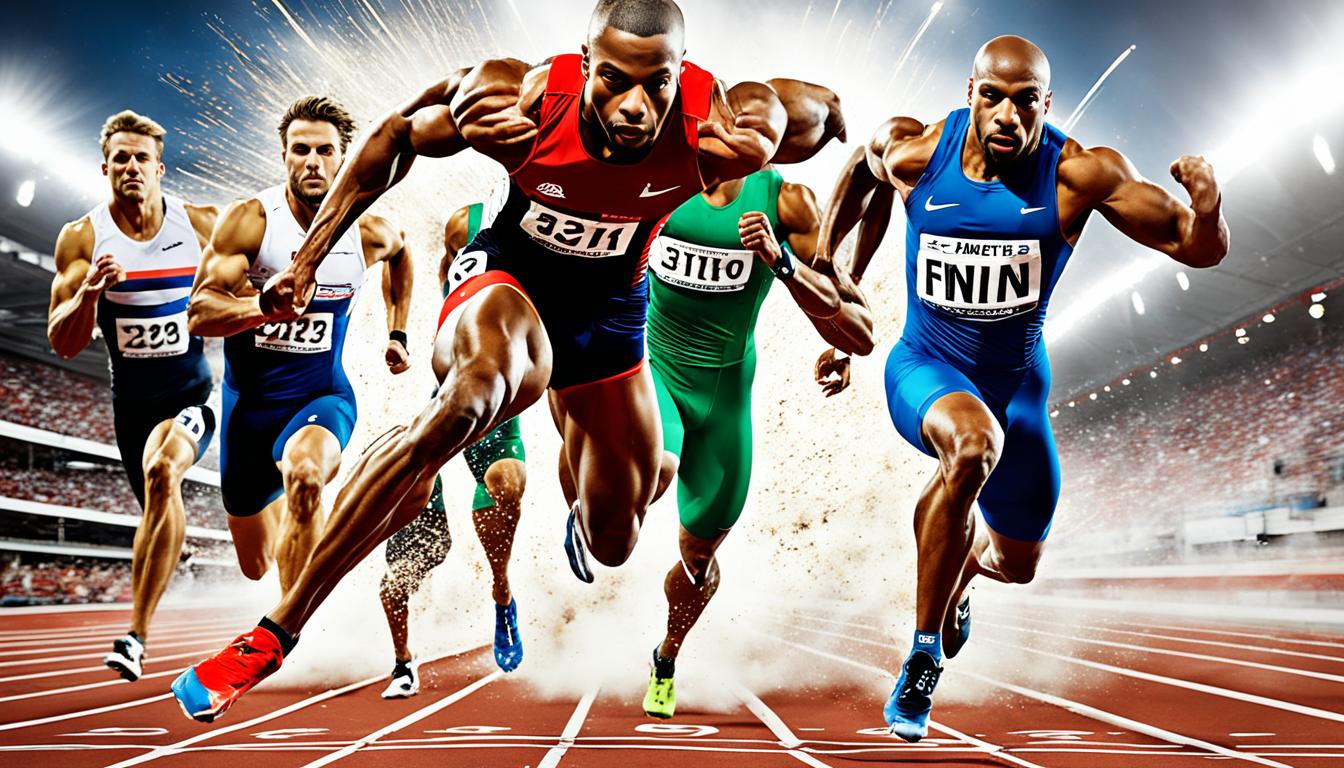
Understanding Your Client
Understanding your client is crucial in fitness photography. Each client may have different expectations and goals for the photoshoot. Whether it is for a magazine cover or social media promotion, it is important to know the purpose of the photos and how they will be used.
Communicating with the client and discussing their preferences and ideas can help ensure a successful photoshoot and deliver images that meet their expectations. By understanding their vision and the message they want to convey, you can tailor your photography style to capture their unique essence and create fitness photos that resonate with their audience.
By establishing a strong connection and open lines of communication with your client, you can collaborate effectively and create a photoshoot that exceeds their expectations. Building a strong rapport with your clients not only enhances the overall experience but also helps in fostering long-term relationships and client referrals.
Client Collaboration
When working with clients for fitness photography, it is essential to gather all the necessary information about their brand, target audience, and desired style. By asking the right questions and actively listening to their responses, you can gain valuable insights that will guide your creative process.
Some key points to discuss with your client include:
– The purpose of the photoshoot: Whether it is for personal use, professional promotions, or a specific campaign.
– Target audience: Understanding who the client wants to reach with the photos can help you create images that resonate with the intended viewers.
– Brand image: If the client represents a fitness brand or is an influencer, understanding their brand identity and aesthetic will help you capture photos that align with their overall image.
– Preferred style: Discussing the client’s preferred style of fitness photography, such as energetic action shots or posed portraits, will ensure that you capture the desired look and feel.
– Ideas and inspirations: Encourage your client to share any ideas, inspirations, or references they have in mind. This will help you align your creative vision with their expectations.
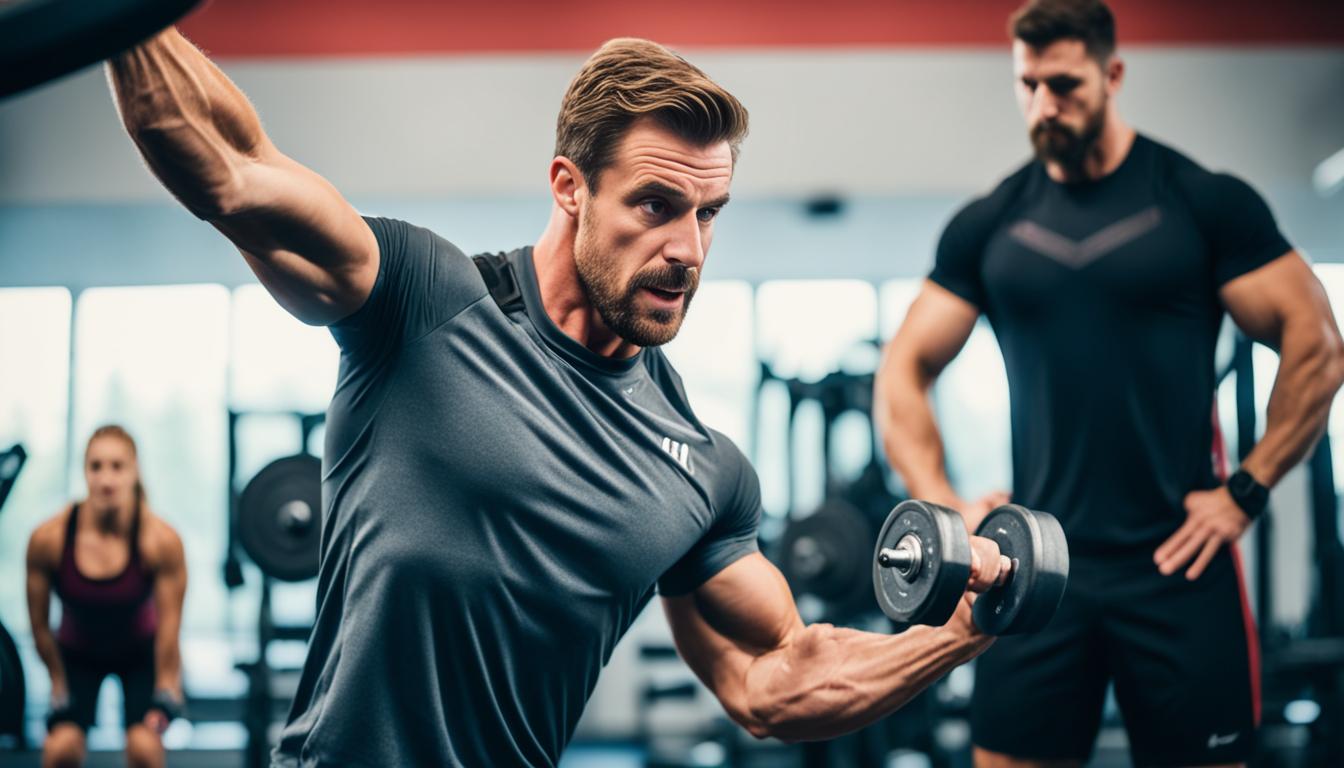
Remember, every client is unique, so it is crucial to adapt your approach and photography techniques to suit their individual needs. By understanding your client and working closely with them throughout the process, you can create fitness photos that not only showcase their physicality but also reflect their personality and brand identity.
Selecting the Right Location
The location of the fitness photoshoot plays a significant role in setting the atmosphere and conveying the desired message. Depending on the purpose of the photos, you can choose to shoot outdoors or indoors, such as in a gym or studio. Outdoor fitness photography can provide a natural and vibrant backdrop, while indoor photography allows for more control over lighting and props. The decision should be made in collaboration with the client to ensure the desired outcome.
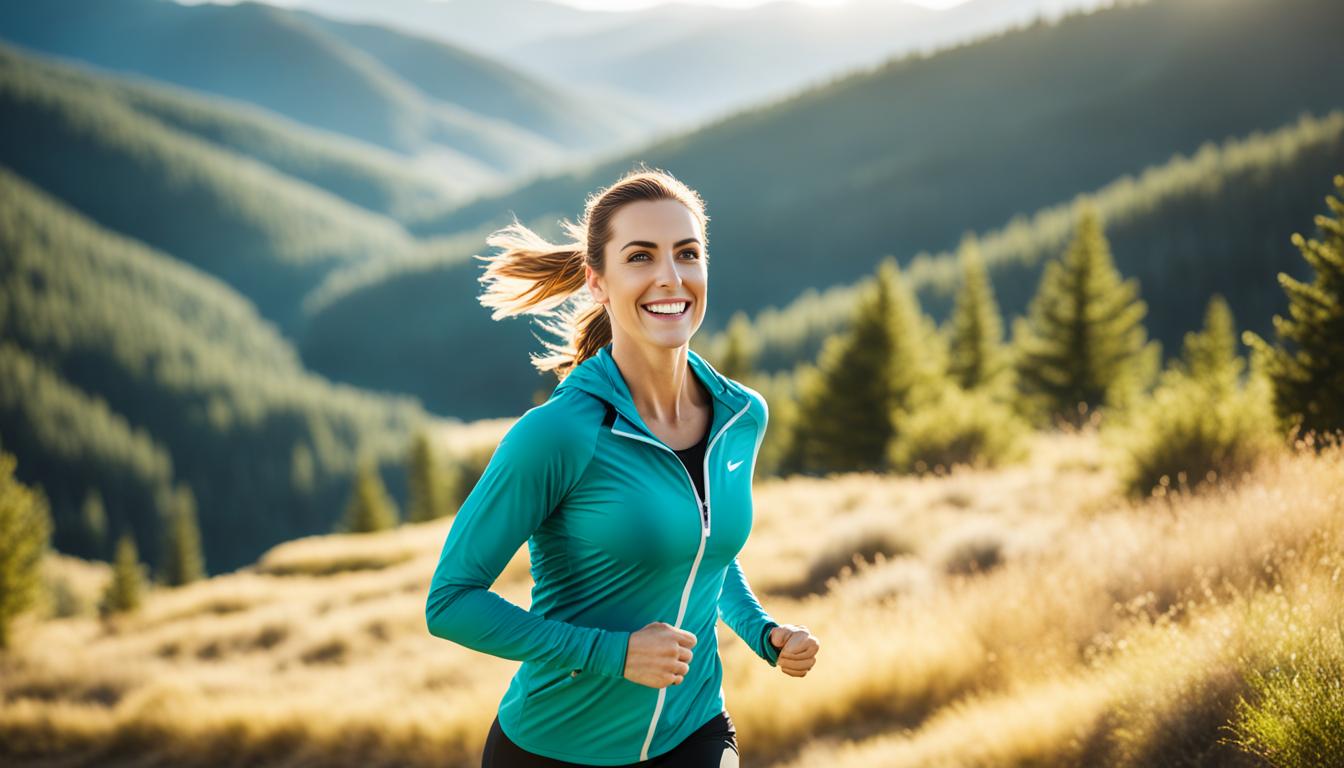
Mastering Lighting Techniques
Lighting is a critical aspect of fitness photography. Whether you’re shooting in a gym, outdoors, or a studio, understanding and utilizing different lighting techniques can greatly enhance the quality of your photos.
In a gym setting, it’s important to consider the existing lighting conditions and make use of additional light sources to achieve a balanced and flattering result. Softboxes or strip boxes can be great tools to create a well-lit environment that highlights the athlete’s physique. By strategically positioning these light sources, you can minimize shadows and bring out the best features of your subject.
When shooting outdoors, natural light can be your greatest asset. It not only provides a beautiful and dynamic backdrop but also brings a sense of energy and authenticity to your photos. Take advantage of the different times of day to experiment with different lighting conditions. The golden hour, just before sunrise or sunset, offers a soft, warm light that adds a touch of magic to your images.

In a studio environment, you have complete control over the lighting setup. This allows you to be more creative and experiment with various techniques to highlight the muscles and create dramatic effects. Cross lighting, where two light sources are placed at opposing angles, can create a sculpted look by emphasizing the contours of the athlete’s body. Rembrandt lighting, characterized by a triangle of light on the subject’s cheek, is another popular technique that adds depth and dimension to your photos.
By understanding the specific lighting needs of each location and adapting your techniques accordingly, you can master the art of lighting in fitness photography. Remember, lighting is not just about illuminating your subject, but also about creating a mood and telling a story through your images.
Posing and Composition
Posing and composition are essential elements in fitness photography. While action shots capture the dynamic movements of athletes, posed fitness pictures showcase the physique and strength, allowing the viewer to appreciate the hard work and dedication put into achieving such a fit body. To capture the perfect shot, it is important to guide the model and suggest poses that highlight their individual personality, while still maintaining a sense of authenticity and naturalness.
When it comes to composition, choosing the right angles and perspectives can make a significant difference in the final outcome of the photo. By strategically positioning the camera and focusing on the muscles and body lines, photographers can create visually appealing images that emphasize the subject’s physical attributes. Remember, the aim is to capture the strength and power of the body, so it’s essential to pay attention to details and find the best angles.
“Photography is an art of observation. It has little to do with the things you see and everything to do with the way you see them.” – Elliot Erwitt
Adding props can also enhance the composition of the photo, providing context and visual interest. Depending on the client’s preferences and the overall concept of the shoot, props such as weights, exercise equipment, or even simple objects like ropes or chains can contribute to creating a captivating image. The key is to ensure that the props enhance the overall message and don’t distract from the main focus: the body and the muscles.
In addition to posed shots, capturing candid moments can bring a sense of authenticity to fitness photography. Candid shots reveal the true essence of the athlete, allowing their personality to shine through. Whether it’s a moment of concentration during a workout or a candid laugh, these unscripted moments can add depth and emotion to the overall series of photos, making the viewer feel more connected to the subject.
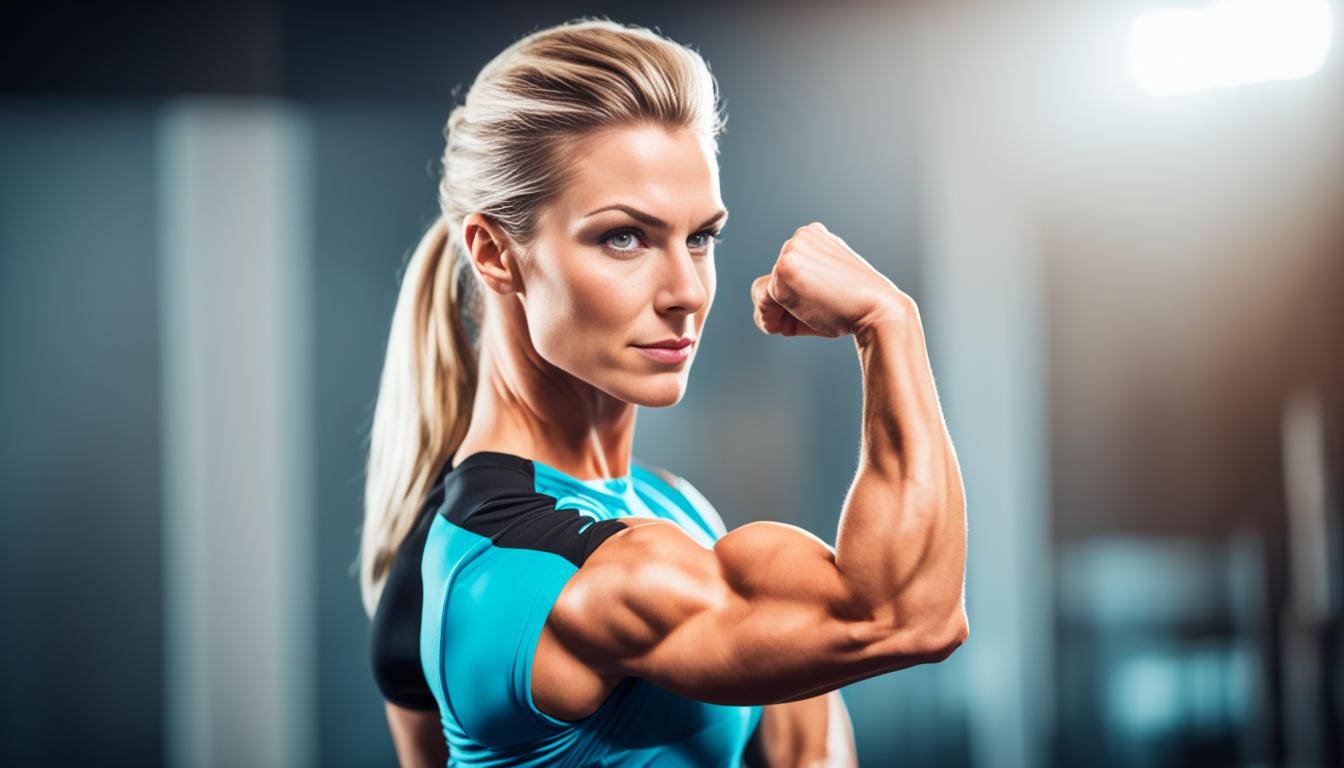
Incorporating various posing techniques, paying attention to composition, and capturing candid shots all contribute to creating stunning fitness photographs that showcase the dedication and hard work put into achieving a fit and strong physique. Remember, the goal is not only to capture a visually appealing image but also to convey the physical and mental strength that comes with living a healthy lifestyle.
Conclusion
Fitness photography is a dynamic and diverse genre that allows photographers to capture the strength, athleticism, and energy of individuals. By collaborating closely with clients, understanding their goals, and selecting the right location, photographers can create compelling images that resonate with the audience.
Mastering lighting techniques, whether it’s using additional light sources in a gym, harnessing the beauty of natural light outdoors, or employing various studio lighting setups, is essential in creating impactful fitness photos. Additionally, guiding models through posing and composition helps highlight their physique and unique personality, resulting in striking images.
Each fitness photoshoot is an opportunity for photographers to unlock their best shots and elevate their brand. By applying the right techniques tailored to each client and shooting session, photographers can capture powerful images that not only showcase athleticism but also inspire and motivate others to embrace a healthy and active lifestyle.
FAQ
What is fitness photography?
Fitness photography is all about capturing the strength and healthy living of athletes through dynamic and energetic images that showcase their athleticism and physique.
What equipment is recommended for fitness photography?
Using versatile and sharp lenses, such as the Nikon AF-S DX 16-85mm f/3.5-5.6 ED VR, can help produce vibrant and detailed images suitable for fitness photography.
How can I ensure a successful fitness photoshoot?
Understanding your client and their fitness journey, choosing the right location and props, and taking test photos in advance can contribute to a successful fitness photoshoot.
What types of fitness photography are there?
Fitness photography encompasses editorial and lifestyle photography used in magazines, social media, and commercials, as well as portrait photography for professional athletes and bodybuilders.
Why is understanding my client important in fitness photography?
Each client may have different expectations and goals for the photoshoot, so understanding their preferences and ideas is crucial to delivering images that meet their expectations.
How do I select the right location for a fitness photoshoot?
The choice between shooting outdoors or indoors depends on the purpose of the photos. Discussing the desired outcome with your client can help determine the ideal location.
How does lighting impact fitness photography?
Lighting is critical in setting the mood and highlighting the muscles in fitness photography. The use of additional light sources and various lighting techniques can enhance the quality of the images.
What are some tips for posing and composition in fitness photography?
Guiding the model through poses that showcase their physique and strength, as well as choosing the right angles and perspectives, can create visually appealing fitness photos. Incorporating props and capturing candid shots can also add interest and authenticity.
How can I elevate my brand through fitness photography?
By understanding your client, selecting the right location, mastering lighting techniques, and capturing compelling poses and compositions, you can create captivating fitness photos that showcase your skills and elevate your brand.
Source Links
- https://expertphotography.com/fitness-photography/
- https://www.wikihow.com/Photograph-Bodybuilders
- https://shotkit.com/fitness-photography/

